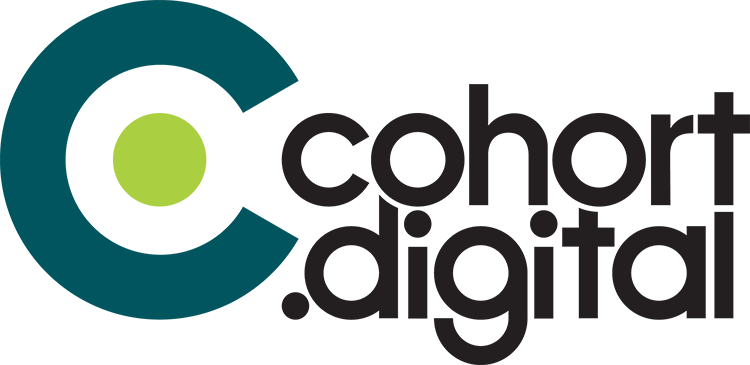first party research across two years – part 1

At the end of 2022, we were blown away by the response we received from our social media usage survey. (See more here.) What started as a high school capstone project for our previous intern, Mia, has become a statistically significant piece of first party research we’re collecting annually. It has helped us better understand how people are interacting with digital and social media today in our area. We’re excited to share part 1 of 2023’s results.
(Pardon us, we’re less quippy than usual. We just wanted to get right to the data on this one! Wait. Does that count as a quip?)
method
While survey participant numbers varied by year, the average percentage of each age group remained pretty steady. Both years our lowest responding age groups were age 19-24 and 25-34. This is indicative of their participation in the social media platforms where the survey was made available.
- The original survey was put together in November of 2022 with a focus on generating as much participation from Kansas residents as possible.
- The 2023 version of the survey was opened up to non-Kansas residents, but the majority of respondents were still in Kansas.
- The survey was promoted organically only through social media with posts being made by both cohort.digital and its employees on Facebook, Instagram, Twitter and LinkedIn.
Here are a few key takeaways in the most-used platforms. (Be on the lookout for an expanded take on newer platforms in our follow up post!)
We’re finally seeing some pretty big changes in Facebook use amongst younger demos! Nearly 30% of teens reported they didn’t have an account and 25% that had an account hadn’t used it in a while.
- More than half of the 13-18 year olds surveyed aren’t actively using Facebook at all and just under 27% reported that they were there daily. This is a big shift from 2022 where more than 48% of Kansas teens were still checking Facebook daily and only 18% didn’t have an account.
- There’s a similar story in the 19-24 year old demo. Last year 80% said they checked their Facebook accounts daily, while only 33% reported doing so in 2023. This year a combined total of 33% of 19-24 year olds either didn’t have a Facebook account or hadn’t been on Facebook in a while.
- There’s been a slight downshift in daily Facebook use for all demos aged 25–54; but older demos actually reported stronger daily use numbers in 2023 than in 2022.
The takeaway: if you’re looking to reach middle and older demos, a strong organic or paid Facebook presence will still get you in front of 90%+ of all social media users aged 25 years or older.
While younger demos aren’t hitting Facebook on the regular, they’re still on Insta. 72% of teens age 13-18 report checking their Instagram accounts daily with another 8% checking several times a week.
- Daily IG use across all demos was up compared to 2022, but it was most pronounced in the teen demo with an 18% jump in daily use.
- Across all age demos, regular Instagram use (daily or multiple times a week) increased but is still not very popular with folks who are 55+.
- Nearly 40% of survey respondents ages 55-64 report not having an Instagram account and it jumps to nearly 60% for the 65+ demo.
The takeaway: a strong organic or paid Instagram presence still has the potential to reach younger and middle demos and is a great place for any visually-compelling marketing.
Youtube
This was the social platform that survey respondents were the most likely to have an account on, regardless of how frequently they use it. (Only 10.7% of respondents of all ages didn’t have an account.)
- Regular Youtube account use jumped nearly 9% for teens and young adults (ages 13-24).
- Other age groups didn’t show significant change one way or another in Youtube account usage frequency.
The takeaway: Youtube’s regular, universal reach isn’t adequately shown through account use since you do not have to be logged into your account or even on Youtube to consume their video content.
Snap
Across nearly all age groups, the regular use of Snapchat dropped when comparing 2023 to 2022. The only exception was for the 35-44 year old group where daily use increased by 6%.
- The biggest drop in daily usage came from our youngest age demo, 13-18 year olds, where the percentage of daily users dropped nearly 17%.
- More than 91% of 19-24 year olds still report using Snapchat daily or multiple times a week.
The takeaway: Snap isn’t going away anytime soon. Placements should be considered carefully with regard to age groups to maximize effectiveness.
We have two key takeaways about the shifts from 2022 to 2023. The first is a move away from Facebook in line with what we’re seeing nationally. The second is that while TikTok and Snap may seem like the best platforms to reach younger audiences on the surface, in reality Instagram and YouTube are both used more often. Check back soon for Part 2 for the data on newer platforms!
Go Forth. Go Digital.
-cohort.crew



